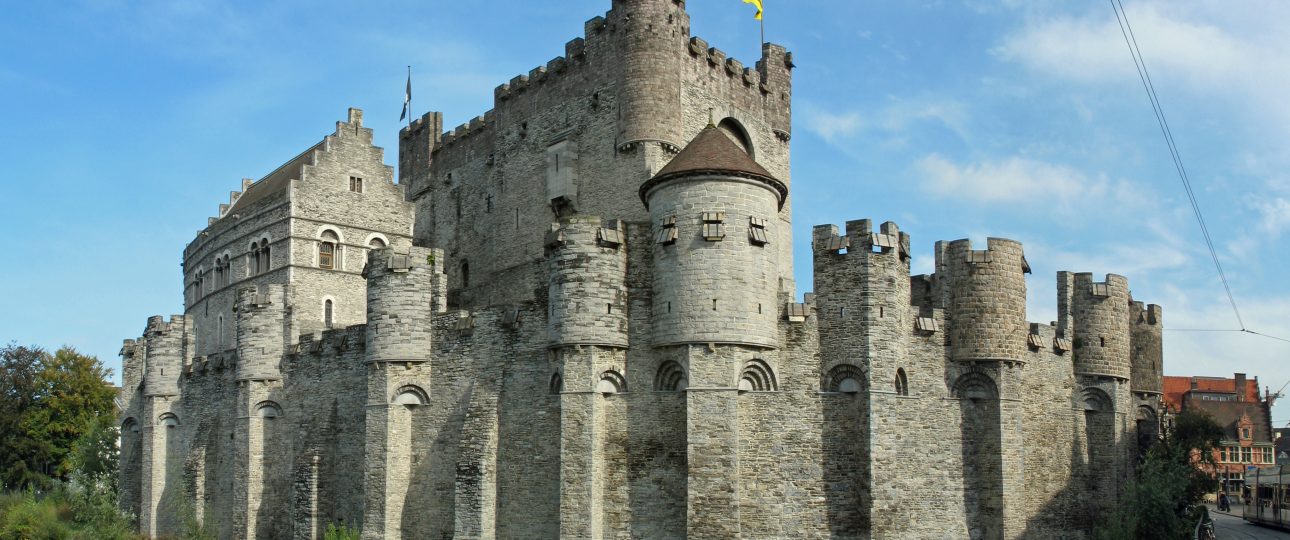Exploring the Castle of the Counts
In the vibrant city of Ghent, Belgium, the Castle of the Counts (Gravensteen) stands as a testament to medieval architecture and history. This fortress, with origins dating back to the 12th century, offers a fascinating glimpse into the past. Its towering walls, drawbridge, and panoramic views of Ghent make it an essential stop for anyone interested in history or architecture.
Historical Significance
The Castle of the Counts was constructed in 1180 by Count Philip of Alsace. It served as a seat of power for the Counts of Flanders, reflecting the turbulent history of the region. Over the centuries, the castle has been a royal residence, a prison, and a courthouse. Its stone ramparts and 24 towers symbolize the might of the Counts during a time when Ghent was a focal point of power and conflict.
The Architecture
The castle’s architecture is both formidable and captivating. Built primarily from grey stone, it features:
- Imposing Towers: The castle’s towers offer breathtaking views of the city and are a highlight for visitors.
- Moat: Historically used for defense, the moat adds to the castle’s medieval allure.
- Drawbridge: An original feature that enhances the castle’s historical authenticity.
- Great Hall: Inside, the Great Hall showcases wooden beams and provides insight into the living conditions of the Counts.
Unique Features
The Castle of the Counts is notable for its preservation of original character and its engaging exhibits:
- Interactive Exhibits: The castle houses a collection of medieval weaponry and torture devices, displayed in what was once the pantry and courtroom.
- Audio Tours: Visitors can enjoy a humorous audio tour narrated by Flemish comedian Wouter Deprez, offering entertaining insights into the castle’s history.
- Cultural Events: The castle hosts various cultural activities, including events during the Ghent Festivities.
Best Time to Visit
For a pleasant experience, consider visiting during the spring (April to June) or fall (September to October) when the weather is mild. Weekdays are generally less crowded, allowing for a more relaxed exploration.
How to Get There
Reaching the Castle of the Counts is straightforward:
- By Train: Ghent is accessible by train from major Belgian cities. From the central station, a tram or a short walk will bring you to the castle.
- By Tram: Ghent’s efficient tram system includes lines 1 and 4, which stop at Gravensteen.
- By Car: Parking is available near the castle, but be aware of pedestrian zones in the city.
Local Transportation
Once in Ghent, navigating the city is easy:
- Trams: The tram network connects major attractions and is convenient for getting around.
- Bicycles: Ghent is bike-friendly, with numerous rental services available.
- Walking: Many attractions are within walking distance, making it a pleasant way to explore the city.
Nearby Attractions
While visiting the Castle of the Counts, consider exploring these nearby sites:
- Saint Bavo’s Cathedral: Known for its stunning architecture and the famous painting “The Adoration of the Mystic Lamb.”
- Graslei and Korenlei: A scenic area along the river, ideal for a stroll or dining at a riverside café.
- Patershol: A historic neighborhood with charming restaurants and boutique shops.
Visitor Information
Before your visit, keep the following in mind:
- Opening Hours: Typically open from 10 AM to 6 PM, but check for seasonal variations.
- Admission Fees: Entrance fees apply, with discounts for students and seniors.
- Guided Tours: Consider a guided tour for deeper insights into the castle’s history and architecture.
Travel Tips
Enhance your visit with these tips:
- Wear Comfortable Shoes: Be prepared for walking and climbing stairs in the towers.
- Bring a Camera: Capture the stunning views and architecture.
- Check Event Calendars: Look for special events or reenactments during your visit.
The Castle of the Counts is a captivating piece of Ghent’s cultural heritage. Whether you’re a history enthusiast or simply curious, the castle offers an enriching journey into Belgium’s medieval past. Prepare for an adventure that combines history, architecture, and culture in one remarkable location.




